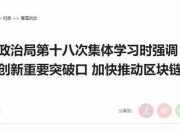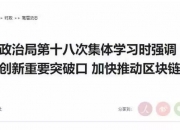我国古代成语中的钱币故事 (二)
十泉十美
成语,是中华文化中一颗璀璨的明珠,它们文字简练,意义深刻,朗朗上口,大多数来自历史典故和民间传说,有一些也蕴含着丰富的钱币文化,在此,笔者挑选其中几个与大家分享。
3、锱铢必较 zi zhū bì jiào
, /strong>, span style="font-syze: 16px; >strong >span style= jio/span
此成语形容非常小气,很少的钱也一定要计较。也比喻气量狭小,很小的事也要计较。和它意思相近的成语有:睚眦必报(象瞪一下眼睛那样极小的怨仇也要报复,形容心胸狭窄)。
The description is very modest, and the small amount of money has to be measured. And the metaphor is small, and the small things have to be measured. And the pronunciation is like: "Photo."
在《荀子.富国》中有:"割国之锱铢以赂之,则割定而欲无厌”的句子。其意思是,即使把国家一点点的土地割让以贿赂别人,虽然割让给对方了,但对方的欲望不会满足,是贪得无厌的。
There is a sentence in "Cut the baht of the land, cut it off, and it means that even if the land of the country is ceded to bribe others, even if it is ceded to the other, the desire of the other will not be satisfied and the desire of the other will be voracious.
而“锱铢必较”这个成语,正是由此引申而来的。
其中的“锱、铢”:都是古代很小的重量单位,按照旧制,锱为一两的四分之一,铢为一两的二十四分之一。
The baht, which is a small weight unit of ancient times, is a quarter of one or two and a quarter of one or two baht, according to the old system.
(图1)
其实,这两个字在我国古代钱币中也有体现。比如战国时期,有一种钱币名叫两甾(甾即锱的意思, 图1),还有铢重一两十二、铢重一两十四(图2)等钱币,由于它们铸造数量较少,知道他的人可能并不多。
(图2)
还有一种钱币叫五铢,知道它的人很多。这种钱币自西汉武帝时期开始铸造,历经西汉、东汉、三国、两晋、南北朝、隋朝,前后流通使用了700多年,它们大小不一,品种多样(图3),是我国历史上名副其实的长寿钱币。
(图3)
其实,除了最有名的五铢,历史上还出现过两铢,三铢,四铢,六铢等钱币,这是因为当时钱币使用的是计重制度。
(图4)
直到唐朝初期,它们才被开元通宝(图4)所取代,从此,我国的钱币告别了“铢两”记重时代,进入了以通宝、元宝相称的宝文钱体系新时代。
2、轻重九府 qīng zhòng jiǔ fǔ
span style="font-size: 16px; >2 > >9 span/slang/span
此成语是指周代掌管财政和货币的机构,后来泛指国库。
The term refers to the institution in charge of finance and money, which in turn refers generally to the treasury.
其中,“轻重”在古语中是指钱币; 九府,是指掌管财政的九个官署,即大府、王府、内府、外府、泉府、天府、职内、职金、职币。
Of these, “light and light” means, in the ancient language, coins; “设轻重九府”。
It's from Sihan Smagen, "Span style ="font-size: 16px;" "Set the Nine."
可见自古以来,钱币就是最重要的物品之一,被统治者加倍重视。 因此要设立如此多(九个)的官署部门,来对它们进行管理和监督。
So, since time immemorial, coins have been one of the most important items, and the rulers have paid more attention to them. So many (nine) branches of government have been set up to regulate and supervise them.
那么,除了周代,后续的历朝历代是什么部门来管理钱币的呢?笔者在此简要说一下:
> > So, apart from Song generation, what department is the next generation to manage the money? 秦代,在全国范围流通半两铜钱(秦半两),并设有专门的机构负责铸造。到了汉代,铸造钱币的机构叫“上林三官”。三官,是指主持铸造钱币的官员,即钟官,技巧,辨铜三官。其所铸造的“三官五铢”,规格整齐,铸工精良,是我国货币史与考古学上重要的分期标志,因而一直为人们所重视。
Qin Dynasty, who circulates half two copper coins throughout the country, and has a special agency responsible for casting. In Han Dynasty, the institution that made the coins is called the "Senior of Upwood", span style="font-size: 16px;" >three officers, the official who presides the monet, i.e. the bell officer, the skill to identify the coppers.
唐代和宋代,铸造钱币的机构叫做“钱监”。
Dondé and Songdé, the institution that made the coins was called "the money inspector".
(图5)
钱监系官署名,负责监督钱币的铸造和流通。《新唐书·食货志》记载:“(开元)二十六年, 宣、润等州初置钱监,两京用钱稍善,米粟价益下。”
(图6)
比如:南宋时期的一些钱币中,有背面记监的品种(图5,6),也就是说,在它们的背面写着某钱监的名称(简称),比如背"同"(舒州同安监)、"春"(蕲州蕲春监)、"汉"(湖北汉阳监)等,这些钱币,足以证明当时钱监是真实存在的。
元代以发行纸币为主,铸造铜钱较少。负责铸造的机构有交钞提举司、鼓铸局等。
. 明代,铸造钱币的机构称为“钱局”,政府在中央设立“宝源局”,掌管铸钱之事,又在全国很多行省设立“宝泉局”,共同铸行钱币。
Mingyday, the institution that creates the coin is called the "Money Bureau", the Government establishes the "Possessive Source Bureau" at the central level, the "Possessive Spring Bureau" in many of the country's provinces, and co-defends the coins.
(图7)
清代沿袭明制,在工部和户部分别设立宝源局和宝泉局,并在全国各省设立铸钱局。其中,宝泉局是中央最高权威的铸币机构,同时,规定每个地方铸钱局的名称要以“宝”字为首,一般在清代钱币背后(图7),铸有该钱局的满文或汉文简称,比如:宝河局、宝陕局、宝苏局、宝浙局、宝昌局、宝广局等。
到了清末,铸造钱币的机构是大清银行,它始建于光绪年间,原名为清朝户部银行。1912年,在上海大清银行旧址成立了中国银行,开展整理币制,铸造发行钱币、代理国库等业务,是第一家中国的中央银行。(未完待续)
At the end of the year, the institution that made the coin was the Daqing Bank, which was founded in the year of Gwang-seok and was called the Kiyung Ministry Bank. 1912, the Bank of China was established at the old site of Da Qing Bank in Shanghai to organize the currency, create the issuing of the coin, act the treasury, etc., and is the first central bank in China.
想第一时间获得钱币资讯 请把钱币圈公众号设为星标! 钱币圈 钱币爱好者自己的订阅号 money fan's own subscription number 微信又改版了“点赞在看”都点一下吧返回搜狐,查看更多 micro-letters have changed the returned to see more
责任编辑:
注册有任何问题请添加 微信:MVIP619 拉你进入群

打开微信扫一扫
添加客服
进入交流群




















发表评论